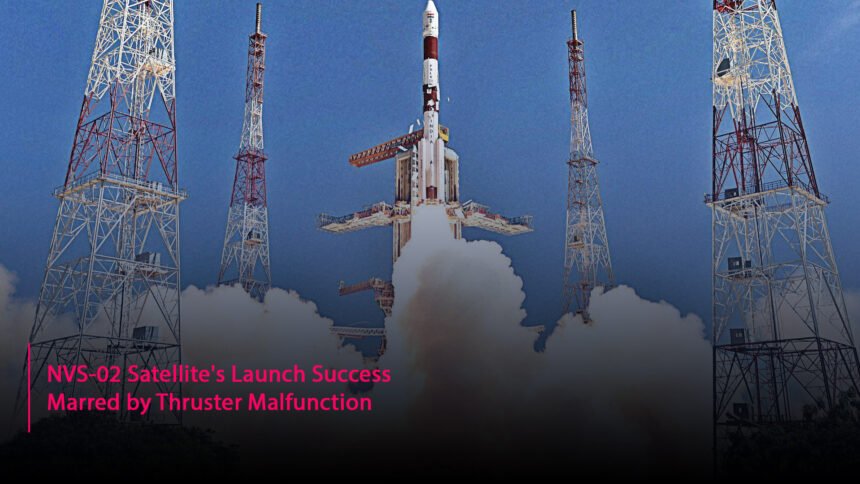The Indian Space Research Organisation (ISRO) encountered a challenge with its NVS-02 satellite, as the spacecraft’s thrusters failed to activate, preventing it from reaching the intended orbit. This announcement was made by the space agency on Sunday.
Launched on January 29 using the GSLV-Mk 2 rocket, the NVS-02 satellite plays a vital role in India’s indigenous space-based navigation system. This launch also marked ISRO’s 100th mission from the spaceport located at Shriharikota in Andhra Pradesh.
ISRO explained that the operations to elevate the satellite into its designated orbital position could not proceed because the valves responsible for allowing oxidizer flow to the thrusters did not open. As a result, the satellite remains in an elliptical Geosynchronous Transfer Orbit (GTO), which is not ideal for navigation purposes.
Addittionally: ISRO Set to Launch SpaDeX Mission on December 30
Despite this setback, ISRO stated that all systems on the satellite are functioning properly and it is currently in an elliptical orbit. The agency is exploring alternative strategies to utilize the satellite for navigation even while in this orbit.
After the GSLV rocket successfully placed the satellite into GTO, its solar panels were deployed without issue, and power generation was operating normally. Communication with ground control has also been established.
Overall, while the launch of the GSLV was executed successfully with all stages performing well and achieving precise orbit placement, the failure of the thrusters presents a significant hurdle for the NVS-02 mission.
Also Read: Why ISRO’s Docking Mission is Essential for India’s Next Steps in Space










